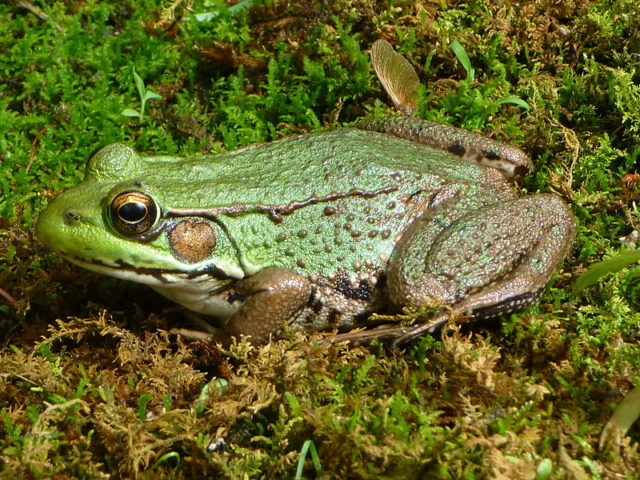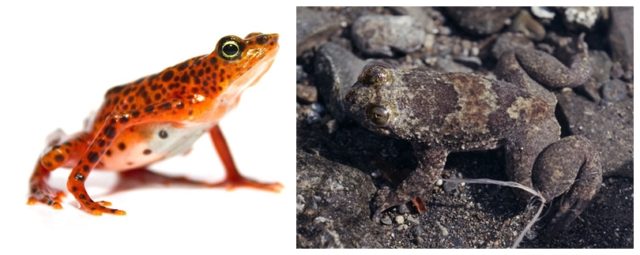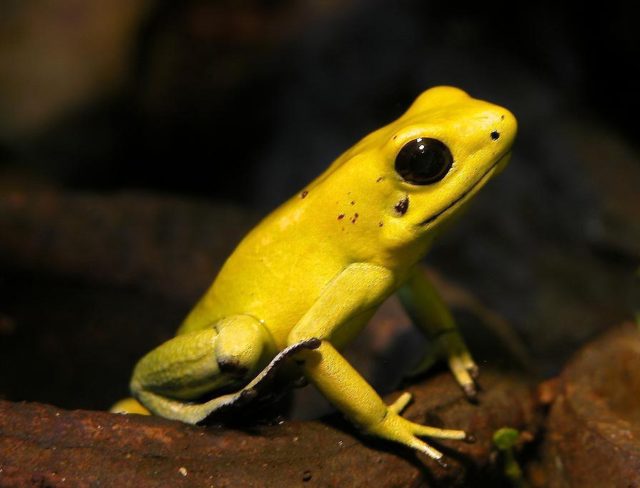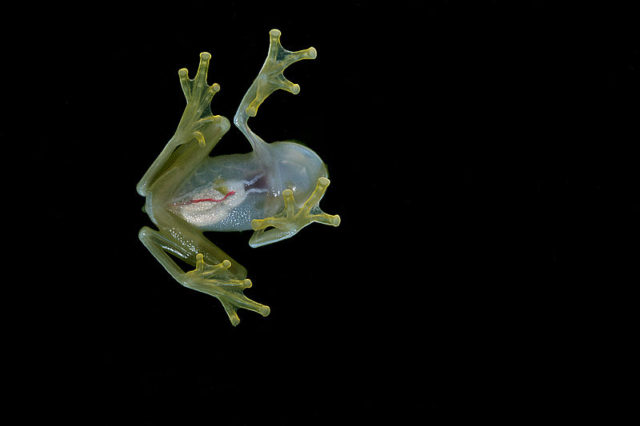We are used to seeing them at some stage of their life cycle, most of us remember watching them grow as tadpoles in our classrooms, and they are a common part of our ecosystem; but how much do you really know about these diverse and amazing creatures? Here are fifteen of our favourite frog facts …
1. Frogs use their eyeballs to help them swallow food! No, I didn’t just make that up to get your attention, it is true. When frogs eat food they blink, pushing their eyeballs back in their heads, and pushing onto the back of their mouth, helping to literally push the food down their throat.
This short video shows just how it works…
2. Frogs eardrums are connected to their lungs! Firstly, frogs do not have protruding earlobes, as we do. Instead, they have flat disc-shaped structures, called tympanums, located behind their eyes. This structure is commonly referred to as the eardrum and acts just like our own eardrums do. The membrane vibrates as sound waves hit it and these vibrations are passed to the inner ear and translated into specific ‘sounds’ by the brain.

The tympanum of this Norther Green Frog is the circular, darker cirle of skin seen behind the eye: Image credit: Contrabaroness
The lungs of many frogs also vibrate with sound, and this can be transferred to the inner ear as well. The lungs are connected to the tympanum by an internal pressure system that prevents the membrane from tearing when receiving very loud noises.
3. Except for the frog that has no eardrum, but hears with its mouth! Gardiner’s frogs, a small breed of frog from the Seychelle Islands, do not have a tympanum (eardrum) or middle ear. They can ‘hear’ sound though, they use their mouth cavity and surrounding tissue to capture and transmit sound to the inner ear.
4. Frogs have a third eyelid – as well as an upper and lower eyelid, the frog also has a third eyelid, called the nictitating membrane, that it can pull up to protect the eye. This lid is transparent, it helps to keep the eye moist and protect from dirt and dust. It is particularly helpful during hibernation, and when the frog is swimming, when the lid is drawn up to cover the eye, a bit like an inbuilt pair of goggles!
5. Frogs drink through their skin. Like many amphibians, frogs can absorb water through their thin, porous skin. In fact, frogs don’t drink water like we do. Some species have special patches on the underside of their bodies, called drinking patches, and absorb all they need through the skin in this area.
Some frogs, such as the green tree frogs, use some basic ‘lemonade bottle’ physics to get the water they need. When a bottle of lemonade is removed from a cold fridge and place in a warm place, droplets of water will condense on the outside of the bottle. The frogs create the same effect on their own skin – they sit for hours in cold areas before retreating back to their warm and humid dens. They then get to drink the resulting water that condenses on their skin.
6. Frogs can also breathe through their skin – the thin and moist skin of frogs does not just allow them to absorb water, it also allows gases to pass through, helping the frog to breathe. In fact, there is a species of frog in Indonesia (Barbourula kalimantanensis) that has no lungs at all and breathes solely through its skin.
7. One more fascinating point about frogs and their skin… they shed their skin frequently, many do so weekly, but some even shed their skin daily; they look like they have a bad case of hiccups while doing do. Any guesses what they do with the skin once they shed it? That’s right, they eat it!
8. Frogs have some interesting methods of parenting! Most take the laid back approach, lay some eggs in or near water and leave the rest to nature. Some take a much more active role though; take the Surinam sea toad for example, she hatches her eggs and then seals them onto the skin of her back. When they finally emerge they are small, but fully developed toads, and she is left with a back full of holes… that kind of makes stretch marks pale in significance, don’t you think?
9. The extreme parenting isn’t just kept for the mums either: The male darwin frog swallows their young once they have developed into tadpoles. They keep them safe from harm… in their vocal sac… until they develop into fully formed frogs. There can be about seven of them at the one time. Finally, once they have completely developed, he gets to spit them out … that must be a some relief!
10. Some frogs make their own anti-freeze; it gets them through the winter and hibernation. They can literally freeze, with their heart slowing and stopping and their body shutting down. Before they do this though their liver converts stored sugars into glucose, which is distributed around the body, helping to stop cells from drying out and shrinking. Another chemical that can help this process is urea, found in the frogs urine.
11. Frogs bones lay down layers when they hibernate, and can be used to age them. Just like the rings of growth in a tree can tell the age of the tree, frogs bones have similar rings that can be used to age them.
12. Every different species of frog makes their own unique sound. With over 6000 species of frog in the world, that’s a lot of ribbits! It is only male frogs that make the load, croaking sound, and they do so by pushing air from their lungs, past the vocal chords and into the air sac. The inflated air sac amplifies the sound allowing such small animals make such a big sounds.
13. Toads are frogs but not all frogs are toads; Confused yet? Nature has a tendency to do that! Frog is a general term used to describe a tailless amphibian of the order Anura. Toads can be considered a subset of frogs. In general frog is used to describe an animal with most, smooth skin, living in or close to water, with long legs and slim bodies; by contrast, toads tend to have rough, dry skin, live on land and have broad bodies with short legs. Of course there are exceptions to these… like the Darius stubfoot toad (Atelopus certus) that looks like a frog, or the Philippine flat-headed frog (Barbourula busuangensis) that looks like a toad… I did say that it is confusing!

Left: Female Darius stubfoot toad; image credit: Brian Gratwicke; Right: Philippine flat-headed frog; image credit: Pierre Fidenci
Here is another general difference between toads and frogs: many toads secrete a toxin from a gland on their back whereas most frogs don’t… which leads to another exception…
14. Speaking of toxins … It is a species of frog, not toad that is considered one of the most toxic animals on earth. It is the golden poison dart frog (Phyllobates terribilis); at only 5cm long it harbours enough toxin to kill 10 grown men.

Image credit: Wilfried Berns
15. There is a see-through frog! Frogs come in all shapes, sizes and colours. They can even change their skin colour to help moderate temperature, warn predators that they are toxic or for camouflage. But my favourite frog skin colour belongs to the glass frog; These tiny frogs are green from above, but when you turn them over, their underside is completely transparent. Their heart, lungs and intestines are on full view. It is thought that they have evolved this transparent skin for camouflage. Whatever the reason, they are yet another marvel of the frog world .

Image credit: Geoff Gallice
If you thought that frogs were creepy, slimy creatures, I hope this post has changed your mind. Or maybe you have another great frog fact to share? Let me know in the comments below.
This is fascinating…so glad I found this information. I live in Michigan with a marsh as my ‘backyard’…love the bullfrogs, tree frogs, turtles, & all the rest of the cool wildlife here.
Thanks Sheila, I’m glad this helped!